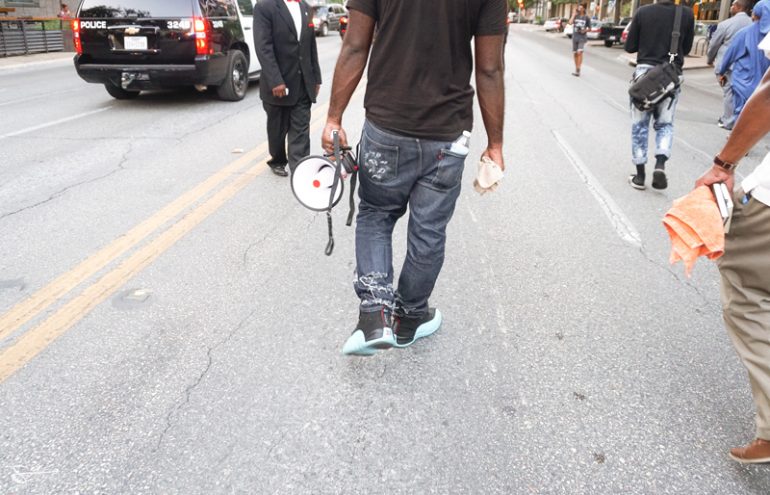Videos (most recently, over jaywalking in California, and in Georgia cops were fired after footage surfaced of them punching and kicking a motorist) exposing police brutality have led to increasing protests. While official groups like Black Lives Matter promote peace, these events can sometimes turn violent. With some expressing a disapproval, here’s your step-by-step guide on how to properly protest as a minority in 2017.
Step 1: Just do it.
The truth is, many Americans don’t want you to protest at all, thinking:
- “What are you even oppressed by?”
- “Why does everything have to be about race?”
- “Racism is over. We had a Black president.”
- “This is just an excuse for Black people to loot.”
People who perpetuate this mindset are the very reason protesting is necessary. If they don’t want to acknowledge racism when you’re bringing it into the public discourse, then they definitely are not going to acknowledge it without demonstrated opposition.
Protesting can cause a mild inconvenience, like noise or blocked traffic, but this is no more inconvenient to American communities than being shot in the street like a dog because you’re Black.
Step 2: Be loud.
The biggest opponents to protests say it shouldn’t be disruptive, but done silently. NFL quarterback Colin Kaepernick did this best when he sat silently during the national anthem. Yet, his silence was met with jersey burning, racial slurs, and blackballing. It revealed two things:
- The NFL doesn’t care about Black lives, only the money Black men generate for the league.
- America feigns approval of silent protest. Truth is, it doesn’t want you to at all.
Step 3: Know your history.
Non-progressive Americans dislike protests because they feel it leads to violent destruction of property. This is not always the case, but they are quick to forget that violent protest is the foundation of this country and the U.S. Constitution.
We still face a double standard: It’s hypocritical for a country so proud of its history of protest, like the Boston Tea Party, to reject that pride when exercised by its brown citizens.
Step 4: Maintain vision.
Some Americans feel activist groups should be thankful and not make kind-hearted, white allies feel guilt or discomfort.
While black activist groups do welcome all races, the work is not about coddling others; it’s about justice and doing what’s right.
Step 5: Prepare for police force.
Protesters are often met with militarized police forces, even when peaceful. Some Americans say this treatment is necessary, but where was this sentiment during the Women’s March?
It seems they’re fine with Black protesters being pepper-sprayed, but they don’t want to see “fragile white women” being tackled by an officer.
Step 6: Don’t leave. Don’t give up.
Racists are quick to yell: “Go back to where you came from.” Most Black Americans are already there, but if these bigots mean go back to their ancestors’ continent, then every white person would need to leave, too. So, leaving is just not an effective form of protest.
Protesters of color don’t have to follow non-progressive guidelines. They need only look to the great activists that came before them and make their own rules on the road to justice.
More 2016 protest photos by Stephanie Warren in the soulciti photo gallery.













